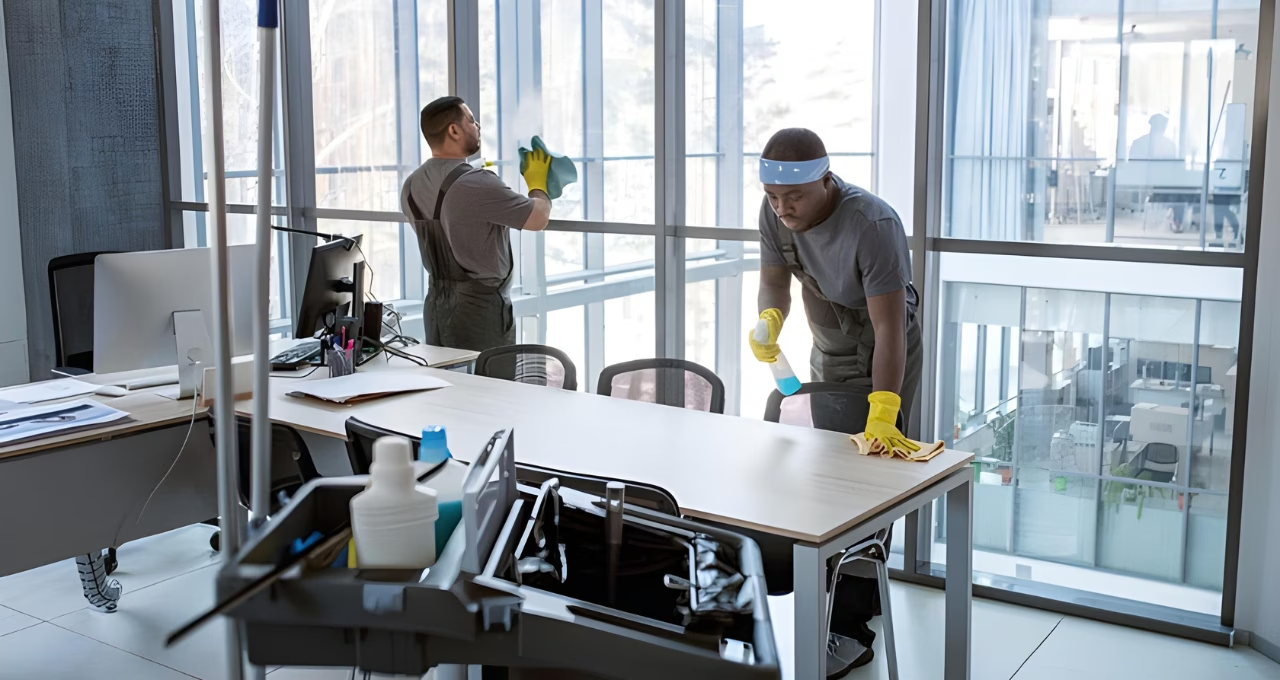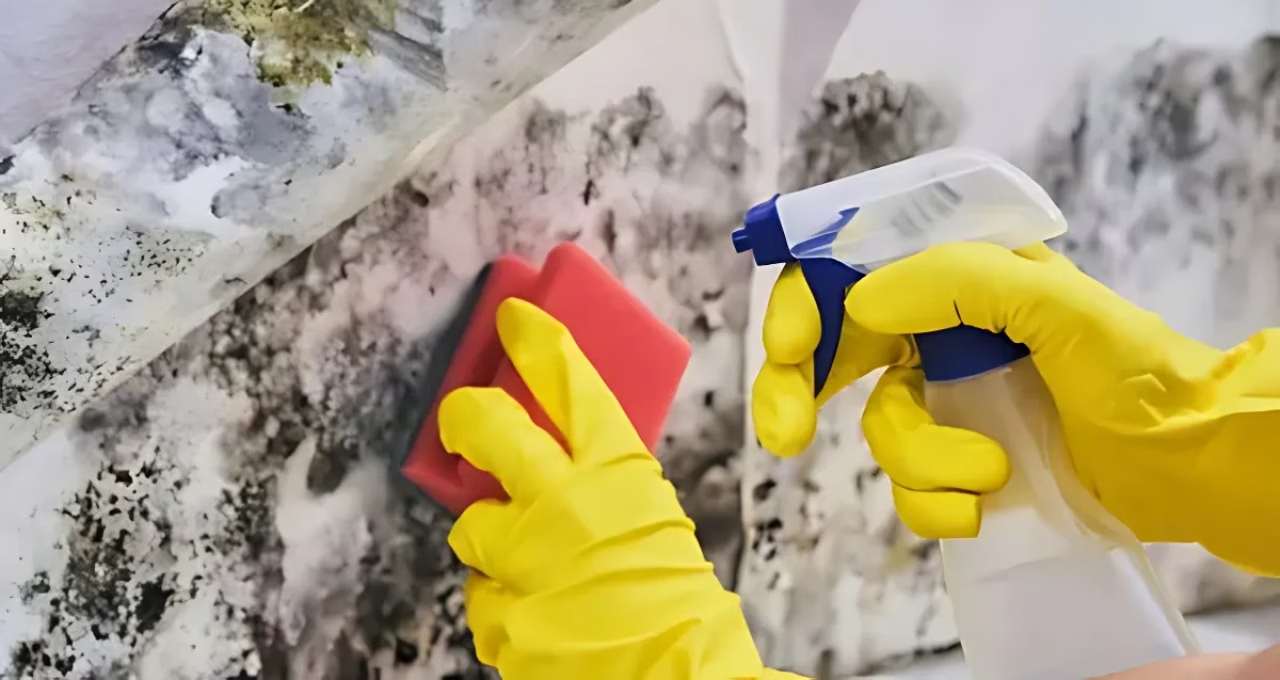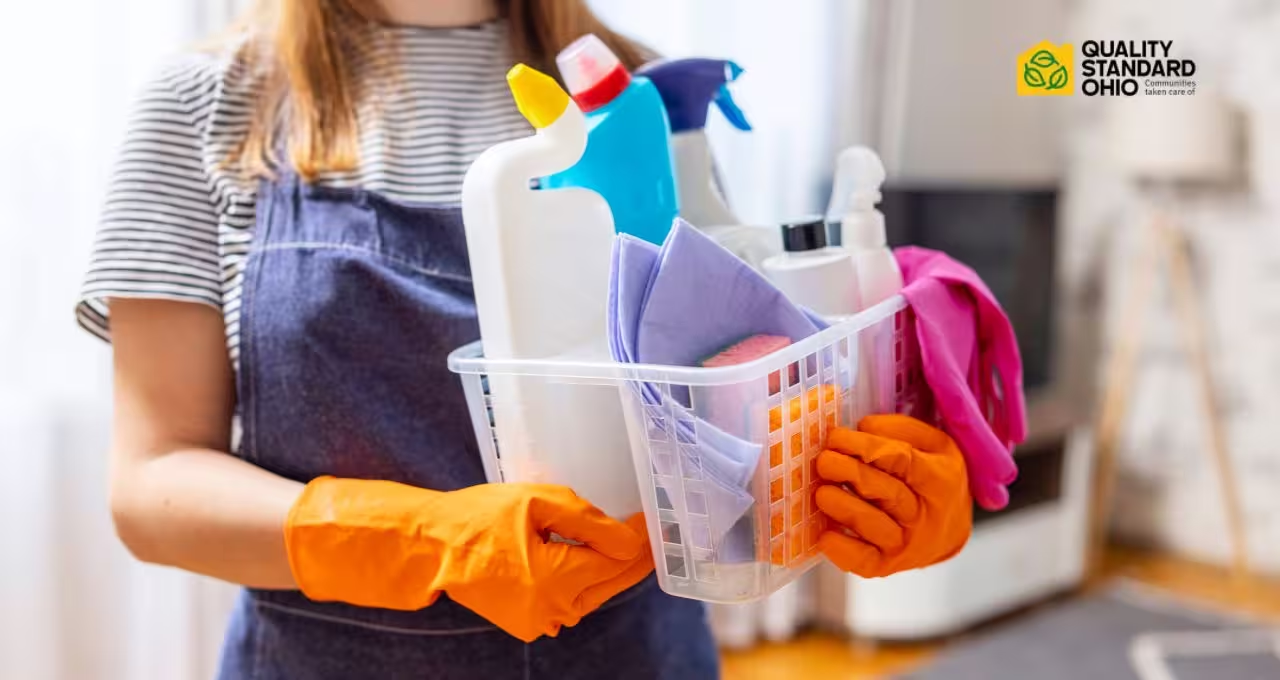Let me guess…
You’ve got a 50,000 square foot warehouse that needs cleaning, and you’re scratching your head about where to even start.
Trust me, you’re not alone.
After a decade of providing commercial cleaning services in Columbus, I’ve seen firsthand how overwhelming industrial cleaning can be.
But here’s the thing: whether you’re managing a manufacturing plant, warehouse, or industrial facility, the principles of effective cleaning remain surprisingly simple.
Today, I’m going to share everything I’ve learned about industrial cleaning.
No fluff, just practical advice that actually works.
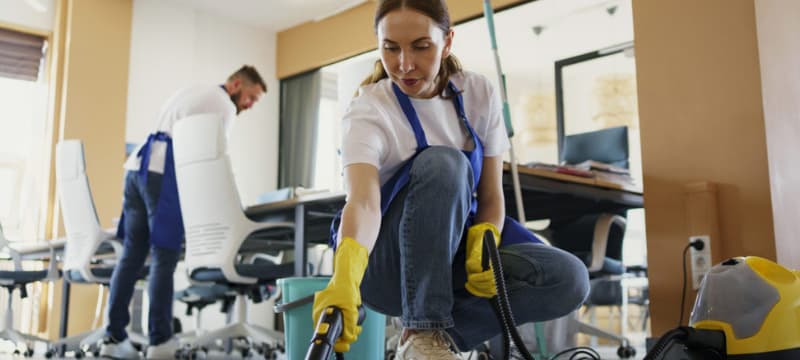
Industrial space cleaning solutions: A practical guide
You know what’s crazy?
Most people think industrial cleaning is just like regular cleaning, just on a bigger scale.
Man, I wish it was that simple.
The truth is, cleaning an industrial space is a whole different game.
After years of helping Columbus businesses with their commercial cleaning needs, I’ve learned that success lies in understanding the unique challenges each space presents.
The hidden complexities of industrial cleaning
Look, I’m going to be straight with you. Industrial cleaning isn’t just about making things look nice - it’s about maintaining safety standards, protecting expensive equipment, and ensuring operational efficiency.
Think about it: you’re dealing with heavy machinery, potentially hazardous materials, and surfaces that require specialized cleaning techniques.
One wrong move, like using the wrong cleaning solution on sensitive equipment, and you could be looking at thousands in damages.
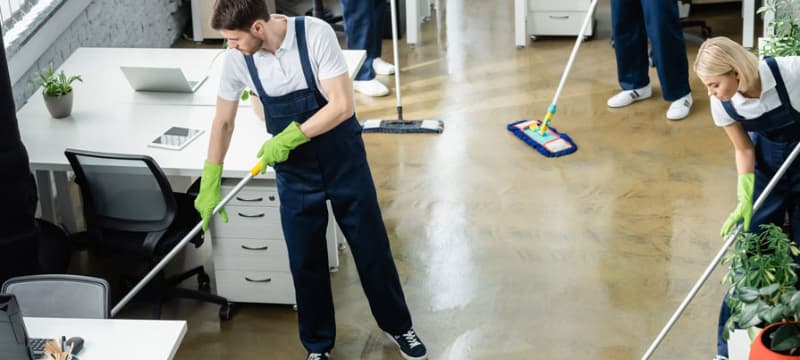
Understanding your industrial space requirements
Before you even think about cleaning products or equipment, you need to understand what you’re dealing with.
Here’s something most people don’t consider:
Every industrial space has its own “microclimate.”
The type of work you do, the materials you handle, even the local Columbus weather - it all affects how dirt and grime accumulate in your facility.
Temperature variations matter more than you think.
In a typical Columbus warehouse, you might have areas that range from freezing to sweltering within the same building.
Each temperature zone needs different cleaning approaches.
Let me give you a real example.
One of our commercial clients had been struggling with floor maintenance in their loading dock area.
They couldn’t figure out why traditional cleaning methods weren’t working.
The issue?
Temperature fluctuations between their climate-controlled storage and the outdoor loading area were creating condensation issues.
This meant their normal cleaning routine was actually making the floor more dangerous.
The ‘zone system’ for effective industrial cleaning
After years of experience, I’ve developed what I call the “zone system.”
Instead of trying to tackle everything at once, you divide your space into specific zones based on:
Critical zones: Areas where cleanliness directly impacts product quality or safety. These need the most frequent attention and specialized cleaning protocols.
High-traffic zones: Places like walkways, loading areas, and workstations that see constant use. These areas need regular maintenance but can usually handle standard industrial cleaning methods.
Support zones: Areas like storage spaces or rarely-used equipment rooms. These might need less frequent cleaning but still require proper attention to prevent long-term issues.
Let me put this in perspective with a practical comparison:
| Zone type | Cleaning frequency | Key considerations | Safety Priorities |
|---|---|---|---|
| Critical | Daily/Shift-based | Product contamination risks, Equipment sensitivity | PPE requirements, Chemical compatibility |
| High-Traffic | Daily | Slip hazards, Visible cleanliness | Non-slip treatments, Quick-dry solutions |
| Support | Weekly/Monthly | Dust accumulation, Storage integrity | Ventilation, Moisture control |
The right tools make all the difference
Here’s something I’ve learned the hard way: using the wrong tools not only makes the job harder but can actually create new problems.
When we help businesses transition to professional cleaning services (like our office cleaning service), one of the first things we look at is their existing cleaning equipment.
Most facilities are using consumer-grade equipment for industrial-scale problems.
It’s like trying to mow a football field with a pair of scissors - technically possible, but definitely not practical.
Essential equipment for industrial cleaning success
Look, I’m not going to bore you with a massive list of every piece of equipment you could possibly need.
Instead, let me share what I consider the game-changers - the equipment that actually makes a difference in industrial cleaning.
First up, let’s talk about floor maintenance. floor cleaning machines. This is where most facilities waste thousands of dollars.
They either buy equipment that’s too small (making the job take forever) or too large (making it impossible to clean tight spaces).
For a typical Columbus warehouse or manufacturing facility, you need a floor scrubber with at least a 26-inch cleaning path. Anything smaller, and you’re just wasting time.
But here’s the kicker - and something most equipment salespeople won’t tell you: The most expensive machine isn’t always the best choice.
The truth about industrial cleaning chemicals
Can I be honest with you for a minute?
The biggest mistake I see in industrial cleaning isn’t about technique or equipment - it’s about chemicals. Specifically, using the wrong ones.
Think about it: in a typical manufacturing facility, you’re dealing with oil, grease, metal shavings, and maybe even food particles - all on the same floor.
Using a one-size-fits-all cleaner is like trying to fix every home repair with duct tape.
Sometimes it works, but usually, it just makes things worse.
Here’s what we’ve learned from our years of providing specialized cleaning services:
Your cleaning solutions need to match your specific challenges. For example, if you’re dealing with heavy oil contamination, you need:
- A degreasing pre-treatment that won’t damage your floor coating
- A main cleaning solution that can break down petroleum products
- A rinse agent that won’t leave a slippery residue
Safety first: The non-negotiables of industrial cleaning
You know what keeps me up at night? Thinking about facilities trying to handle industrial cleaning without proper safety protocols.
This isn’t just about avoiding OSHA violations - though that’s certainly important. It’s about protecting your people and your equipment.
Let me share a quick story that illustrates why this matters. Last year, while consulting for a commercial cleaning client, I saw a maintenance team using standard cleaning products on an electrical control panel.
They were one wrong move away from a serious accident.
Real solutions for common industrial cleaning challenges
Here’s something most cleaning guides won’t tell you: the biggest challenges in industrial cleaning aren’t always about the cleaning itself. Often, it’s about:
- Timing: When can you clean without disrupting operations?
- Access: How do you clean around continuously running equipment?
- Safety: How do you maintain cleanliness without creating new hazards?
The solution? It’s about developing systems that work with your operation, not against it. Let me show you what I mean.
Say you’re running a 24/7 operation. Instead of trying to shut down for cleaning, you might need to:
- Create cleaning zones that can be isolated without stopping production
- Develop a rolling cleaning schedule that moves with your operation
- Use specialized equipment that can clean effectively in less time
This is exactly the kind of strategic thinking we apply in our commercial cleaning services for businesses across Columbus.
Manufacturing facility maintenance: Beyond basic cleaning
Let me tell you something that might surprise you: the cleanest manufacturing facilities I’ve seen don’t actually spend more time cleaning. They just clean smarter.
It’s all about understanding the connection between cleaning and maintenance. When you get this right, everything else falls into place.
The hidden cost of poor cleaning practices
Here’s a truth that took me years to fully understand: poor cleaning practices in manufacturing facilities don’t just create mess - they actively destroy your equipment.
Think about it. Every speck of dust, every bit of uncleaned residue, every ignored spill - they’re all slowly wearing down your expensive machinery. And I’m not just talking about obvious problems.
The real killers are the issues you can’t see.
Take air quality, for instance. In a typical Columbus manufacturing facility, microscopic particles from your processes are constantly floating around. Without proper cleaning protocols, these particles settle into your equipment’s moving parts.
The result? Increased maintenance costs, unexpected breakdowns, and reduced equipment lifespan.
The maintenance-cleaning connection
You know what’s interesting? When we help businesses with their commercial cleaning needs, we often discover that their maintenance issues aren’t really maintenance issues at all.
They’re cleaning issues in disguise.
Let me give you a real example. A local manufacturing plant was having persistent issues with their conveyor systems. They were spending thousands on maintenance, replacing bearings way more often than they should.
The culprit? Improper cleaning was allowing fine dust to accumulate in the bearing housings. All their maintenance spending was treating the symptom, not the cause.
Creating an effective cleaning schedule
Here’s where most manufacturing facilities go wrong: they treat cleaning like an event instead of a process.
You can’t just clean when things look dirty. By then, the damage is already done.
Instead, you need what I call a “progressive cleaning system.” This means different types of cleaning happening at different intervals, each building on the other.
For example, in our commercial cleaning services, we might handle daily cleaning needs while training your team on proper between-shift cleaning protocols. It’s about creating layers of cleanliness that protect your facility and equipment.
The role of employee training
Let’s talk about something that often gets overlooked: your employees’ role in maintaining cleanliness.
Even if you have a professional cleaning service handling the heavy lifting, your employees need to understand basic cleaning principles.
Why? Because the best cleaning program in the world can’t overcome poor daily habits.
Think about it like this: if your employees don’t understand how their actions affect facility cleanliness, they might unknowingly create problems that no amount of cleaning can fully solve.
Measuring cleaning effectiveness
Here’s a question I love asking facility managers: “How do you know if your cleaning program is working?”
Usually, I get one of two answers: “The place looks clean” or “We haven’t had any problems.”
But here’s the thing: visual inspection is the least reliable way to measure cleanliness in a manufacturing environment.
You need objective measurements. In our specialized cleaning programs, we use specific metrics to track effectiveness:
Surface contamination levels, particle counts in the air, equipment performance metrics - these tell you the real story about your cleaning program’s effectiveness.
Advanced cleaning techniques for manufacturing environments
Let me share something I’ve learned after years in the cleaning industry: the most effective cleaning techniques often aren’t the most obvious ones.
It’s not about cleaning harder - it’s about cleaning smarter.
For instance, most manufacturing facilities in Columbus focus on horizontal surfaces. But here’s what many forget: contaminants don’t just fall down. They also travel up and sideways through air currents.
The science behind industrial cleaning
You might be thinking, “Come on, how complicated can cleaning really be?”
Well, let me tell you - it’s more complex than you’d think.
In a manufacturing environment, you’re not just dealing with visible dirt. You’re battling:
- Microscopic metal particles that can destroy equipment
- Chemical residues that can react with cleaning products
- Airborne contaminants that affect product quality
- Cross-contamination between different production areas
This is why many Columbus businesses trust us with their commercial cleaning needs. We understand these complexities.
Making the right choice for your facility
Look, I’m going to be straight with you. While this guide gives you a solid foundation for industrial cleaning, sometimes you need professional help.
Think about it this way: your core business is manufacturing, not cleaning. Just like you wouldn’t want a cleaning company trying to run your production line, you might not want to handle all cleaning in-house.
That’s where our specialized cleaning services come in. We handle the complex cleaning challenges while you focus on what you do best - running your business.
The real value of professional cleaning
Here’s something interesting: when businesses switch from in-house to professional cleaning services, they often save money.
Sounds counterintuitive, right?
But consider this: Professional cleaning services bring:
- Specialized equipment you don’t have to buy or maintain
- Trained professionals who know how to clean efficiently
- Proven processes that prevent costly mistakes
- Regular maintenance that extends equipment life
Taking the next step
Whether you decide to handle cleaning in-house or partner with professionals, the key is taking action. Poor cleaning practices cost manufacturing facilities millions each year in:
Lost productivity. Dirty environments slow everything down.
Equipment damage. Improper cleaning destroys expensive machinery.
Employee health issues. Poor air quality affects your team’s performance.
Ready to elevate your facility’s cleanliness?
While we don’t provide industrial cleaning services directly, we do offer comprehensive commercial cleaning solutions that might be perfect for your office areas, break rooms, and other non-industrial spaces.
Want to learn more about keeping your facility clean and efficient? Check out our guide to specialized cleaning services or contact us to discuss your specific needs.
Remember: A clean facility isn’t just about appearance - it’s about efficiency, safety, and success. Whether you handle cleaning in-house or partner with professionals, make sure you’re giving it the attention it deserves.
Need help with your facility’s non-industrial cleaning needs? Contact us today to discover how we can help maintain the cleanliness of your office spaces and common areas while you focus on your core operations.
